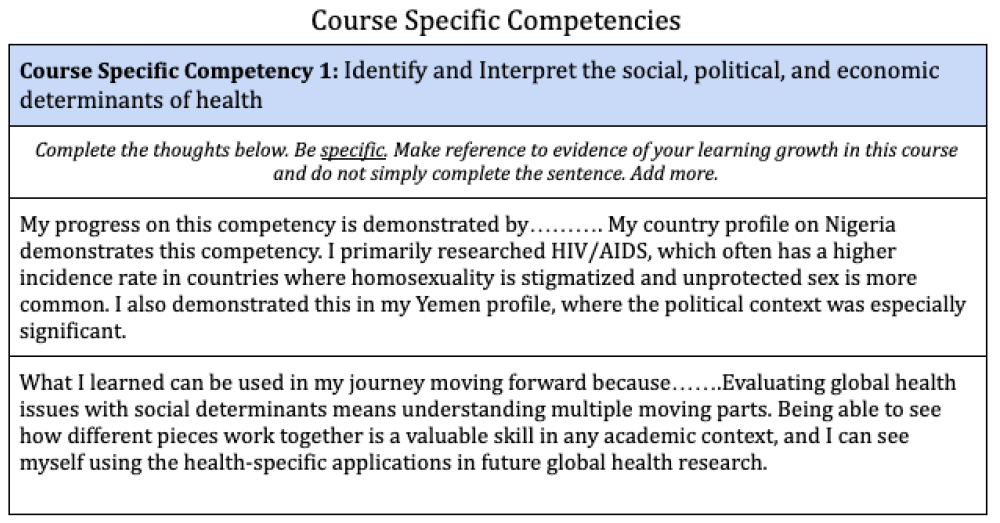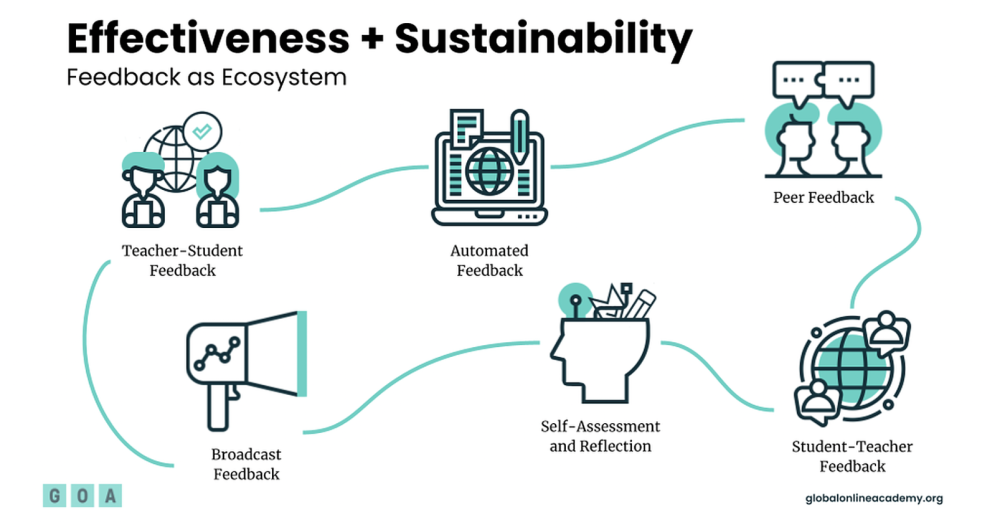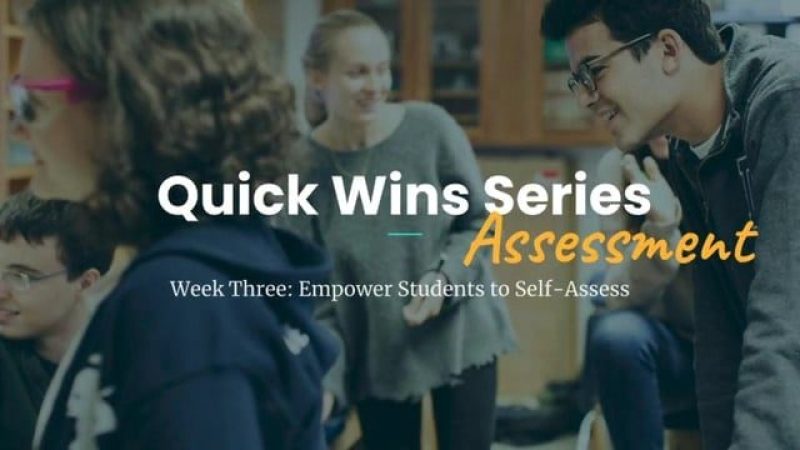How to Assess for Learning: Part Five in Our Series on Shifts and Strategies for Teachers
“The evidence of a rigorous program is that students can take what they learned and apply it effectively and appropriately to new situations…When transfer is among our goals, if deeper learning is our quest, then we need assessments that give us evidence that students can, in fact, apply their learning to new situations.” - Jay McTighe, NAIS New View EDU Podcast
Year after year, GOA engages with schools who identify assessment as a top-tier professional learning priority. Despite the fact that assessment is a critical part of our teaching practice, in our busy day-to-day lives in schools, we sometimes lose sight of the true purpose of assessment as providing evidence of student learning. We end up conflating the term “assessment” with other elements of our practice, such as the products of learning (tests, quizzes, labs, essays, etc.) or grading and reporting.
To assess for learning is to generate evidence of students’ application (and transfer) of content knowledge and skills. In order to work towards this competency, as teachers we can start by making the following five moves:

1. Establish Clear Learning Criteria
“Goals are meant to be understood, not merely noticed; they are meant to be woven into all the unit design and activities so that they become meaningful as connective tissue for the learning.” - Grant Wiggins
In our teaching practice, it is critical for us to articulate clear and transparent learning criteria that serve as the “connective tissue” underlying and unifying all that we’re doing. However, these learning criteria shouldn’t just be an organizing principle for us as teachers. These criteria are at their best when students can actively make meaning of them and use them to understand and communicate where they are in their learning and articulate authentic next steps. It is through establishing clear learning criteria and aligning experiences and assessments to those criteria that we can create a shared language of learning that supports student agency.
Assessment Quick Wins Week 3: Empower Students to Self-Assess
This video walks through various strategies GOA teachers use to help make meaning of learning criteria.
2. Design Authentic Demonstrations of Learning
Authentic assessments allow students to demonstrate their skills in a context that mirrors that of the real-world discipline. While these assessments can range from large-scale project-based learning methods to small performance tasks, what they have in common is that students are applying what they’ve learned to novel contexts. When we design for students to solve problems, especially ones within our communities, they get to apply their skills in ways that elevate rigor, align to learning criteria, offer real-world feedback, and invite voice and choice.
David, Hawken School (Ohio, USA), Catalyst Conference Project Introduction
GOA Student shares a Catalyst Conference presentation in which he applies concepts from GOA’s Game Theory to a project on gerrymandering.
3. Create Opportunities for Student-Led Reflection and Metacognition
For assessment to be a meaningful and powerful learning experience for students, we have to equip students to play an active role in the assessment process. One way in which to do that is to create dedicated time for students to reflect not only on what they’ve learned but on how they learned it. In building a weekly or biweekly reflection routine, we can empower students to take ownership of their learning by identifying concrete goals and tracking their growth over time.

In GOA’s Global Health course, the teacher aligns student reflections to learning criteria and encourages students to identify what they learned and how they know by citing their own work as evidence.
4. Implement Ongoing Formative Assessments
One of the major takeaways from online and hybrid learning as a result of COVID-19 was the importance of prioritizing frequent, low-stakes formative assessments over high-stakes summative assessments. These ongoing snapshot assessments, whether through automated quizzes, entrance/exit tickets, learning conferences, etc., play a critical role in both informing teachers about how to modify their instruction and in signaling to students where they are in their learning. It is through a greater focus on ongoing formative assessments that we, as teachers, can meet all students where they are and provide them with the support they need to engage in deep learning.
Assessment Quick Wins Week 1: Assess for Understanding Using Snapshots
This video walks through various strategies GOA teachers use to incorporate frequent, ongoing formative assessments.
5. Create Structures to Support Timely and Actionable Feedback
“Decades of education research support the idea that by teaching less and providing more feedback, we can produce greater learning.” - Grant Wiggins
Formative assessments are only as good as the feedback they provide students. As Grant Wiggins offers in Seven Keys to Effective Feedback, feedback is at its best when it provides actionable, usable information and is timely, occurring very close to a learning experience. At times we give feedback short shrift in the name of efficiency as we try to manage the constraints that we have on our time. By using tools like technology and by involving students more deeply in the feedback process, we can design systems and structures that leverage diverse forms of feedback (ex. peer feedback, automated feedback, broadcasting, student-teacher feedback, self-assessment, and teacher-student feedback). The potential learning gains for our students from the assessment process are tremendous.

While many of us are employing some of these strategies already in our practice, it is important for us to adopt an integrated approach to assess for learning that encompasses all five strategies. It’s only by designing to assess for learning with intention that we can ensure that our students are learning deeply and are equipped to thrive as self-directed learners.
Watch our “Ask Me Anything: How Do We Assess for Learning” event recording from Tuesday, April 26th.



